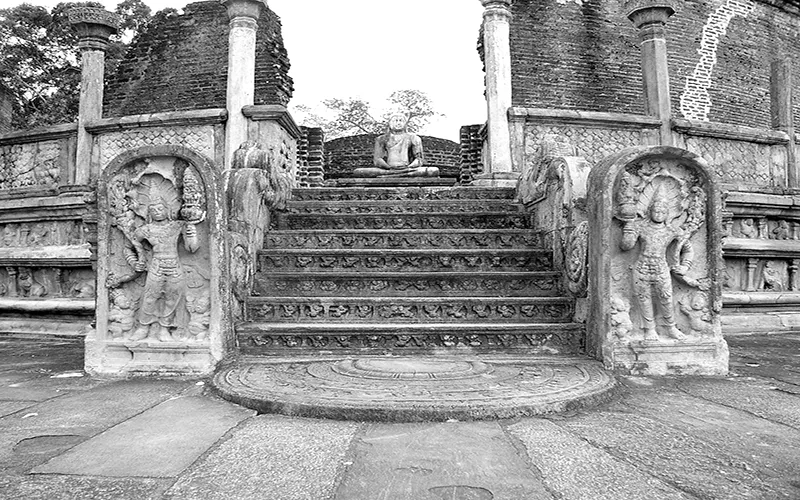-
CENTRES
Progammes & Centres
Location
With the inauguration of a railway track in the Northern Province, Prime Minister Narendra Modi, during his two-day visit to Sri Lanka from March 13 to 14, has managed to hit the right string amidst the people of Sri Lanka. The trip has marked the beginning of a renewed India-Sri Lanka ties.

With the inauguration of a railway track in the Northern Province, Prime Minister Narendra Modi, during his two-day visit to Sri Lanka from March 13 to 14, has managed to hit the right string amidst the people of Sri Lanka. The trip has been widely successful and has marked the beginning of a renewed India-Sri Lanka ties, signalling a renewed interest of the Modi Government to set things back on track, to the 'golden chapters' that he had pledged. Previous Government's in Sri Lanka had favoured China over India and encouraged contracts with the Chinese companies to build roads and ports and had also hosted Chinese military submarines in island.
Mr Modi's visit to Sri Lanka covered a wide range of areas — economic, trade, health and security. India and Sri Lanka signed four agreements with a gesture to reach new heights. Highlighting the historical and cultural ties which India-Sri Lanka have cherished for years, Mr Modi emphasised on a "united Sri Lanka" and expressed his commitment to assist Sri Lanka in the promotion of solidarity and equitable environment among all sections of the society, especially the Sri Lankan Tamil community. The fishermen issue between Sri Lanka and India has been a cause of concern for both and has taken its toll. Therefore, Mr Modi suggested that the fishermen's associations of both countries must meet at the earliest to work out a mutually acceptable arrangement.
During his stay in Colombo, Mr Modi negotiated a pact to modernise the Trincomalee oil tank farms and to develop it as a 'petroleum hub' to meet the requirements of the increasing demand of petroleum. With this, he also announced the proposal to provide a fresh line of credit of $318 million for the railway sector in Lanka. The 500mw Sampur power project, Kankesanthurai port and construction of houses are some of the delayed projects for which, Indian inefficiency and the tardy Sri Lankan Government clearance are responsible. This also found discussion space during his visit.
Unless India is able to finish its own projects on time, it cannot denounce Chinese investments in Sri Lanka. The two sides also signed agreements on visa, customs, youth development and building Rabindranath Tagore Memorial in Sri Lanka. Mindful of the growing trade and trade concerns of Sri Lanka with India, Mr Modi signed an agreement on customs which will facilitate trade by reducing non-tariff barriers in both the regions. He also gave an affirmation on the Currency Swap Agreement of $1.5 billion between Reserve Bank of India and Central Bank of Sri Lanka which will help to stabilise Sri Lankan rupee.
Jaffna and Talaimannar were the other destinations where Mr Modi made his presence felt. Jaffna has remained the cultural heart for the Tamil minority. He is the only second foreign leader to visit the battle-scarred region since the end of the civil war between Sri Lanka and the Liberation Tigers of Tamil Ealam. The most commendable aspect of Mr Modi's visit to this region was that, he managed to call on the majority and early implementation of the 13th Amendment, which will provide for greater autonomy and devolution of powers to the Lankan Tamils.
Overall, the visit was remarkable and it showcased India and its policy of solidarity. And, with the recent visit, a new synergy with the idea of cooperative federalism and devolution was established in the minds of the Lankan leaders. Mr Modi's trip also managed to restore trust among the Sri Lankans.
(The writer is a Research Assistant at Observer Research Foundation, Delhi)
Courtesy: The Pioneer
The views expressed above belong to the author(s). ORF research and analyses now available on Telegram! Click here to access our curated content — blogs, longforms and interviews.